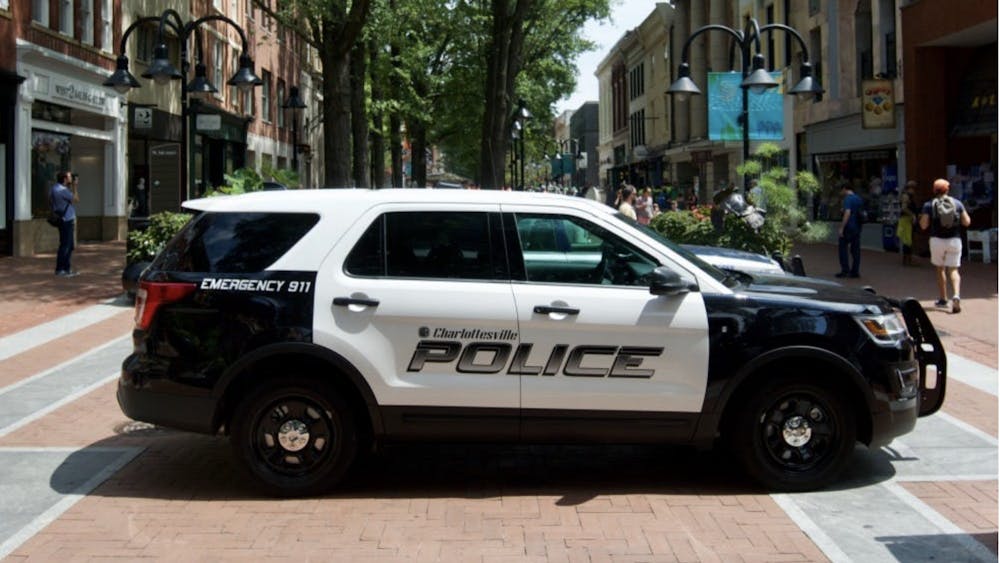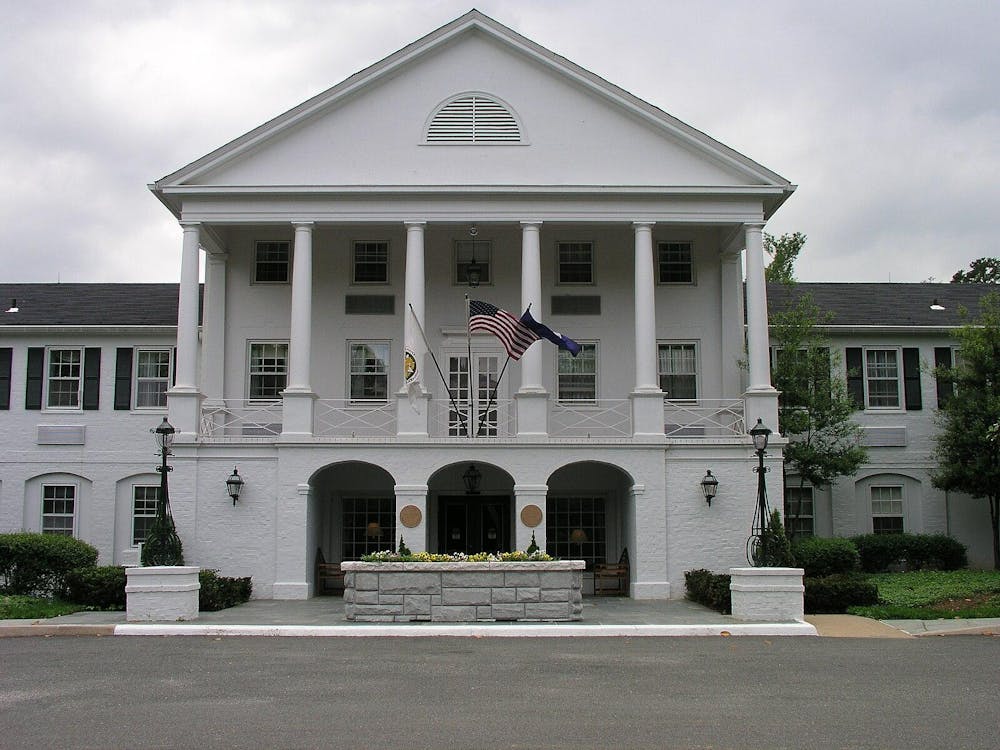The City of Charlottesville and the County of Albemarle have completed the first phase of the Disproportionate Minority Study — a multi-disciplinary project that examined how minorities are treated within the criminal justice system — to find that black individuals are overrepresented at every point in the local criminal justice system.
Using data from 2014 to 2016, the 14-member Adult Disproportionate Minority Contact Research and Planning Committee worked with MGT Consulting, a Florida-based public sector consulting firm, to determine the extent of racial disproportionality and disparity in the local adult criminal justice system.
The City of Charlottesville defines racial disproportionality as one race being over- or under-represented compared to the overall racial makeup of the whole community. Racial disparity is when individuals in similar situations receive different outcomes based on race.
The study is unique in its examination of racial disparity in the criminal justice system. While there have been studies on disproportionality, very few studies of racial disparity in local justice systems have been conducted.
During the period of 2014 to 2016, 51.5 percent of those arrested in Charlottesville were black men, where black men comprise only 8.5 percent of the City’s population. In Albemarle County — a region where black men make up 4.4 percent of the population — the demographic comprised 37.6 percent of arrests.
Racial disparity was also found across five areas of contact between individuals and law enforcement. African American men were found to be more likely to have serious charges leveled against them and experience a higher number of companion charges. They had longer bail and bond release decisions, experienced a longer length of time awaiting trial and experienced more guilty outcomes at trial.
Racial disparity for black men was not found at two critical points — the duration of time served for an offense and the duration of sentence imposed.
Recommendations from the committee
The nine recommendations the Disproportionate Minority Study produced to combat racial disparity and disproportionality in the local criminal justice system include to increase and support meaningful reentry programs, increase transparency of the City and County police departments and develop, encourage and support special initiative programs.
The Committee also recommends an increase in diversity in law enforcement, the adoption of programs that are alternatives to incarceration and to provide additional training opportunities for law enforcement and other actors in the criminal justice system. Finally, it was recommended that the City and County review the best practices from other communities and increase the access to data at each decision point in the criminal justice map.
The study also recommended that additional research be conducted to build upon the findings and recommendations of the report.
“We appreciate the work of the team in analyzing this dataset and presenting recommendations to address the findings,” said Siri Russell, director of Albemarle’s Office of Equity and Inclusion. “That so many of the recommendations capture efforts already underway in the City and the County speaks to our renewed commitment to equitable outcomes for our community.”
The City of Charlottesville and the County of Albemarle have already undertaken strategies that address several of the recommendations made in the report. Albemarle and Charlottesville now routinely release their data to the community — such as arrest data by race — instead of waiting for requests.
The formation of a Civilian Police Review Board, a body of community representatives tasked with investigating complaints concerning police misconduct, is among the study’s recommendations.
In Charlottesville, an initial Civilian Review Board was created in 2018 and formally established in November 2019, and the City has begun interviewing candidates for a permanent board.
Michael Payne, councilmember on the Charlottesville City Council, explained that the initial Civilian Police Review Board spent over a year creating bylaws and a recommended model for police-civilian interactions. However, the City Council passed bylaws that were not informed by the work the Board had completed, which led to tension and a lack of trust within the community.
“One of the recommendations from this study was to create a strong, independent CRB [Civilian Review Board],” Payne said. “I think that’s an important one because the initial point of contact for people with the criminal justice system is through the police.”
The new formation of the Civilian Police Review Board will include people from a variety of backgrounds. For example, the Board will include members of the community who have experience in the criminal justice system, people who live in public housing and those who represent advocacy organizations related to criminal justice reform.
Albemarle County does not have a Civilian Review Board, and the county's Board of Supervisors has not scheduled an official presentation of the report.
Methods
To analyze community perception of the criminal justice system, researchers conducted interviews and hosted five focus groups and four community meetings, with participants consisting of Charlottesville-Albemarle Regional Jail inmates, public defenders, attorneys, police officers and members of the community.
Kaki Dimock, director of Human Services for the City of Charlottesville and a key member of the Committee, explained that the study of community perception was used as a “gut check” of the report’s data. It was to ensure consistency between what the study found and what the community members reported.
The report concluded that community perceptions reinforce its findings, as “the Charlottesville community is struggling with the perceived divide between law enforcement and community members,” adding that the community and law enforcement “clearly want to heal and repair the relationship.”
The Disproportionate Minority Contact Study only used data from 2014 to 2016. The Committee acknowledged this limitation, noting the number of changes in personnel and policy since that period of time. The study was contained to the timeframe so that the Committee could “be certain of [the data’s] quality and reliability.”
Dimock was unsure as to why there was a lack of analysis of racial disparity in other regions. She speculated that the interest in such an in-depth analysis was due to Charlottesville and Albemarle being “a community that is interested in doing better.”
The study was not able to draw comparisons with other communities in terms of disparity due to the lack of widespread analysis. The disproportionality in Charlottesville and Albemarle was found to be consistent with the racial disproportionality across the national criminal justice system.
In 2015, a comprehensive report on racial disproportionality in the Charlottesville juvenile justice system was conducted. The report found that disproportionate minority contact was most dominant at three contact points — referral to juvenile court, secure detention and confinement in a secure juvenile correctional facility.
The results showed that disproportionality exists for black and Hispanic youth at a majority of contact points and, to a lesser extent, for Asian youths.
The 2020 report of the adult justice system is “different in terms of its depth, complexity and result,” Dimock said. The recent study analyzed racial disparity, not just disproportionality, which was the sole concern of the 2015 study.
Presenting the results
An official presentation of the report and its findings were made to the Charlottesville City Council Feb. 3.
Kaki Dimock began the presentation by specifying that the report is not complete but is a multi-phased and multi-year study.
Fred Seamon, executive vice president of MGT Consulting, applauded the City Council for having the “courage and political will” in undertaking a study of this kind, as other communities have chosen not to address such issues in their criminal justice systems.
Mayor Nikuyah Walker expressed frustration at the marathon nature of the study. Dimock had explained that a full analysis of racial disproportionality and disparity in the criminal justice system could take seven to ten years.
“If you were a member of the black community, as I am, this is something that I’ve been seeing for years,” Walker said. “You didn’t need this study in the first place, you have lived the experience.”
Walker was also critical of the study’s recommendations.
“The City has been investing millions of dollars into some of these programs and a lot of staff time and that does not necessarily mean that it’s going to work,” Walker said.
There was criticism of the lack of specificity in the study’s findings and use of data. Councilor Lloyd Snook expressed an interest in knowing the actions and decisions of individual judges with the purpose of generating an understanding of which judges were worse than others.
“Which judges are doing what?” Snook asked. “Which ones are worse than others?”
The presentators explained that they were not able to study such specific data, such as that from the magistrates’ or police departments, not for a lack of interest or willingness but for the process being prohibitively expensive in terms of time and money.
Walker reiterated this need for specificity. She explained the importance of removing the individuals who are perpetuating such discriminatory behaviors for creating community trust and combating prejudice in the criminal justice system.
“I don’t think we can move forward if we don’t look at the who,” Walker said. “We have to be bold enough to take a look at that.”
“We do know the ‘why’ [of why racial disparity and disproportionality occurs],” Walker said. “The ‘why’ is apparent since enslavement ended.”
Despite the absence of such specific action in the report, the Committee was in agreement that a more particular awareness of the local criminal justice system would be beneficial, especially as individual actions are major factors for racial disproportionality and disparity.
“Historically, in these kinds of studies, we find that the places where disparity exists are the areas with the largest amount of discretionary decision-making,” Dimock said.
In an interview with The Cavalier Daily, Payne agreed that determining which members of the criminal justice system have a history of discriminatory behavior is an important step of moving forward.
“Obviously, [the study] is holistic and across city governments, and I don’t think it’s going to be singularly focused on targeting individuals within city government,” Payne said. “But obviously, when you’re making policy change, people are always a part of that.”
Steps going forward
Moving forward with the finding and recommendations of the study, Andres Vernal, senior consultant at MGT Consulting, explained that the Committee is just getting started, and it hopes to analyze police and magistrates data to address the issue of specificity and to provide the community with more robust recommendations.
Dimock explained that there are three avenues that the Committee must now decide upon in determining the next phase of the study.
Either the focus would be on the upstream in the system, meaning the analysis of data from the police department and integrating it into their established master data plan. The focus could also be downstream, meaning understanding police violation data from the Department of Corrections. Finally, the focus could be on implementing and understanding the recommendations already made.
“I don’t think we’re in a position to do all three at once, so we’ll have to choose where we’re going to focus and then what we’ll do is find some money to do it,” Dimock said.
The Disproportionate Minority Contact Report was funded primarily through a grant by the Virginia Department of Criminal Justice Services, with supplementary funding from the City of Charlottesville.
Dimock explained that either grant money or appropriations from the municipality of Charlottesville or Albemarle would fund the next phase of the study.
Payne explained that the City Council will be receiving data on what changes have been made, on the proposed changes and an update on the changes already in place in accordance with the recommendations from the study in April. It will be a chance for the City Council to evaluate the impact of the changes to policy and to see whether the investments are producing worthwhile changes.
For the members of the Committee, a report of this nature is significant due to the importance of evaluating the region’s practices and improving upon them. The overall purpose is to ensure that Charlottesville-Albemarle becomes an increasingly equal and just community.
“Because we spend a lot of time, money and effort on asserting that we provide a fair and just system of care,” Dimock said. “I think it’s our obligation that we’re doing exactly that.”
“The important question for the City government is that, we received this study, the data — what does it change?” Payne said. “How do we avoid the dynamic that we often see where a study is done, is presented on and sits on a shelf?”







